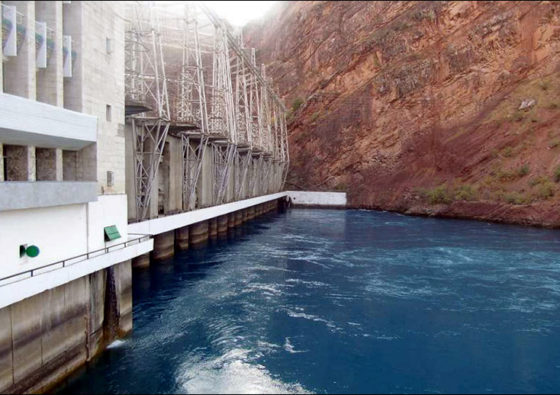Members of Tajikistan’s lower chamber (Majlisi Namoyandagon) of parliament have unanimously voted for ratification of an agreement between the Government of Tajikistan and the World Bank on providing additional 36.5 million U.S. dollars for rehabilitation of the Nurek hydroelectric power plant (HPP).
A regular sitting of the Majlisi Namoyandagon, presided over by its head, Mahmadtoir Zokirzoda, took place on March 11.
Presenting the agreement to lawmakers, Finance Minister Faiziddin Qahhorzoda noted that the World Bank will provide additional US$36.5 million grant from the International Development Association (IDA) for the second phase of the Nurek Hydropower Rehabilitation Project in Tajikistan.
MPs unanimously voted for ratification of the agreement without any discussion.
Recall, the first phase of the Nurek Hydropower Rehabilitation Project, financed by the World Bank (US$225.7 million), the Asian Infrastructure Investment Bank (US$60 million) and the Eurasian Development Bank (US$40 million), was launched in March 2019. It focused on rehabilitating three of the nine generating units, replacing and refurbishing hydromechanical equipment and the key infrastructural components of the power plant, replacing six auto-transformers that are used to evacuate the generated electricity, and enhancing dam safety with a special focus on protection against seismic hazards and floods.
The project’s second phase will finance the rehabilitation of the remaining six generating units, the Nurek bridge, the powerhouse, and other key buildings, while strengthening the HPP’s capacity to operate and maintain the power plant.
The Nurek hydroelectric power plant (HPP) is the most important asset of Tajikistan’s energy system.
The Nurek HPP, with an installed capacity of over 3,000 megawatts, generates about 50 percent of total annual energy demanded in Tajikistan. Operational at currently about three-quarter of its installed generation capacity, the HPP is undergoing its first major rehabilitation since its commissioning in 1972. Once completed, the rehabilitation will allow the Nurek HPP to increase electricity generation by about 300 million kWh, supporting the Government’s efforts to ensure that energy demand can be met even during the cold winter months.







